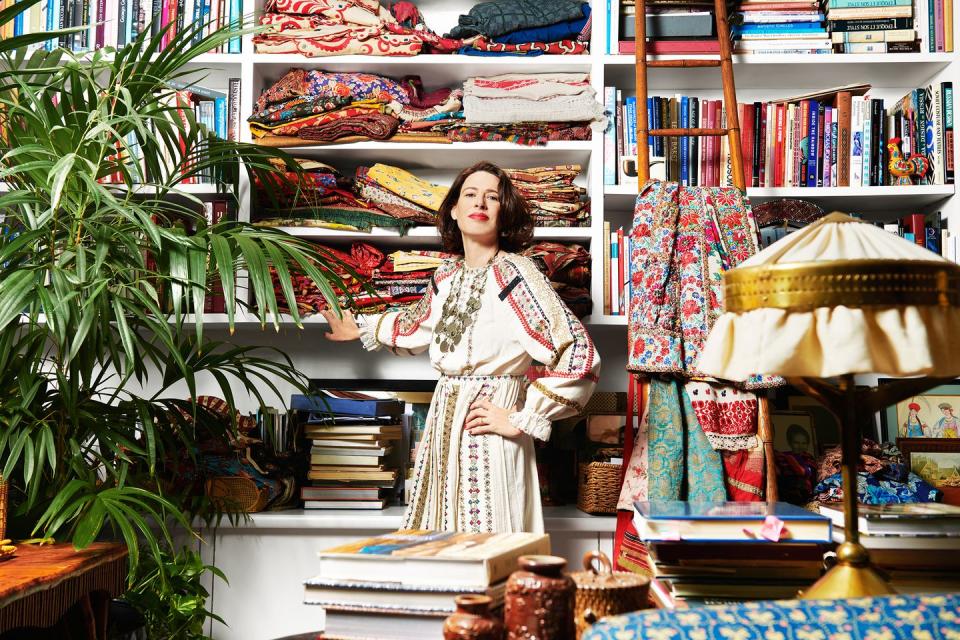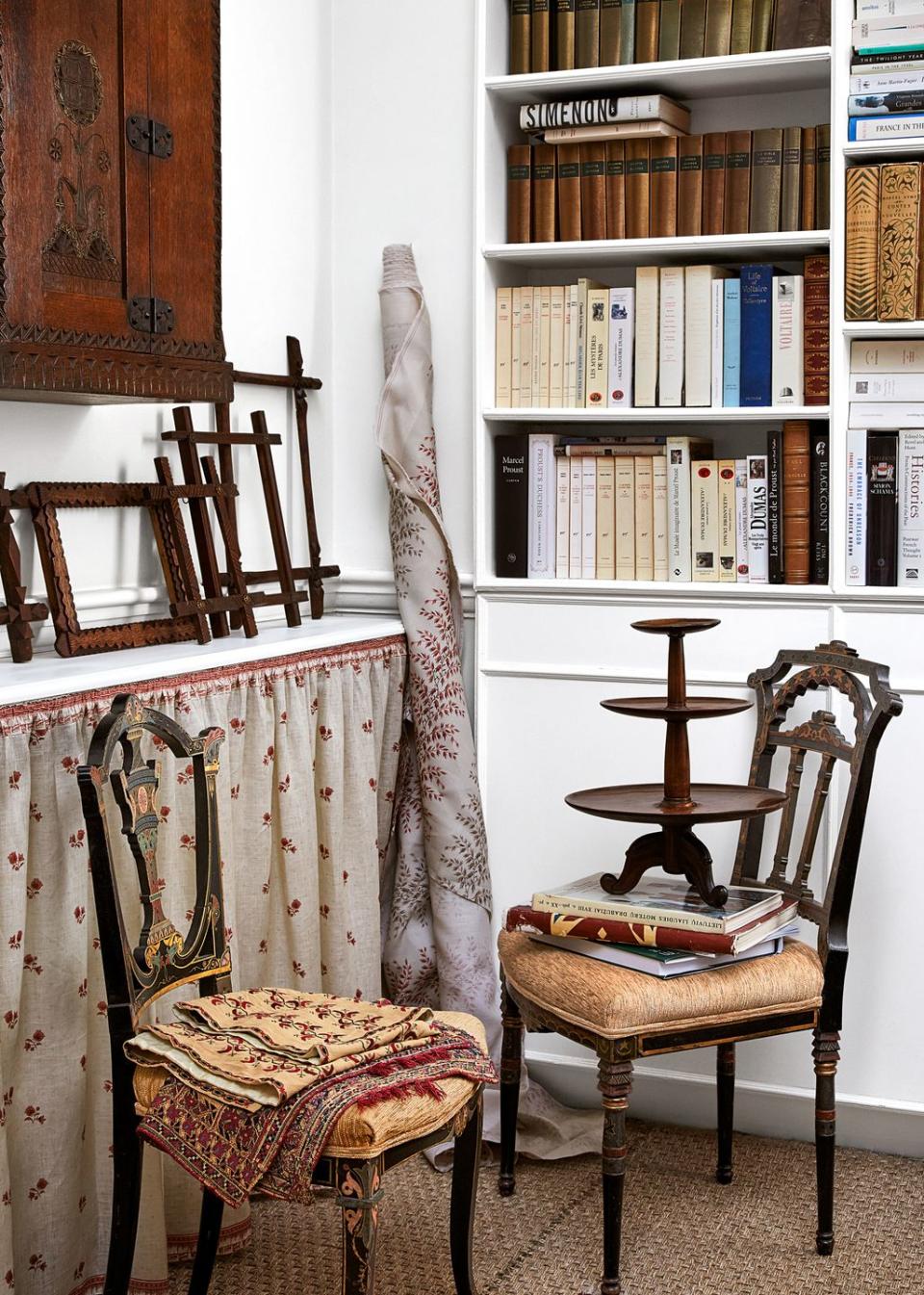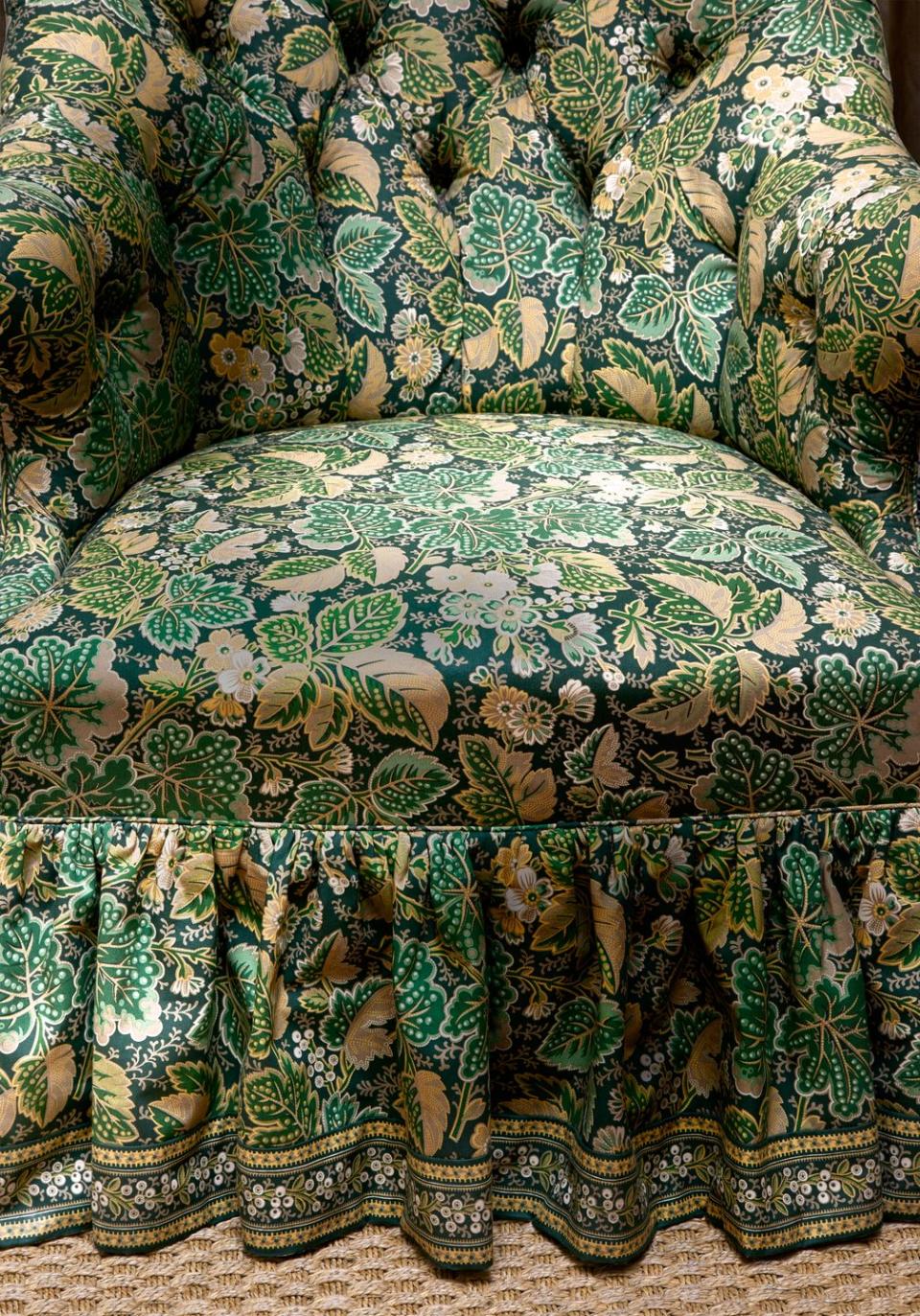This Amazing London Home Is a Master Class in Patterns and Prints

The beauty of a book is that it can do all the talking for you, even when you’re dead. Of all the big-gun design books coming out this season, none has been more hotly anticipated than that of the textile designer and alchemist of 19th-century style, Nathalie Farman-Farma. The pages of Décors Barbares: The Enchanting Interiors of Nathalie Farman-Farma (Vendome Press) depict a world of pattern upon pattern, of nostalgia for a past that Mongiardino made grand, Zeffirelli made fantastical, but only Nathalie has made sweet, cool, and relatable to a girl right now wearing a pussycat bow and reading Cabana.
Speaking of dead, you know how they used to say, “No one was deader than Gucci?” Not accurate. Chekhov was deader. Until today. Nathalie has developed one of the most passionate and sophisticated eyes through which to celebrate the past in the world. How did this happen? We can trace her virtuosity using point-to-point navigation from a “lightbulb” moment at Madeleine Castaing’s legendary shop on the rue Jacob (still extant when Nathalie lived in Paris in the early 1990s) to the extraordinary vision she brought to her apartment in New York City’s Greenwich Village a decade later to the sure-handed style of the house in London where she lives now. The newly acquired studio building adjacent to this house is the engine room for Nathalie’s iconoclastic point of view, a taste that might be described as having enough romantic power to turn a boathouse in Lake Tahoe into a dacha and a stolid Greenwich Colonial into a Proustian dream—taste that has become a business.

ELLE Decor caught up with the creator of the Décors Barbares fabric collection at her London atelier full of caftans, samovars, and fragments of embroidery framed and unframed. These are her ingredients. And books—books that anybody else would look at and think were about the past, but to Nathalie they are prologue containing the recipes. All of this occurs in a large skylighted studio that is one of the most enchanting and personal spaces in London.
ELLE Decor: It all looks very relaxing and comfortable, but clearly a lot gets done in here. Tell us how you use this space.
Nathalie Farman-Farma: My house is tiny, with small spaces, very cozy and old Russia. In the studio, I wanted to do something more Arts and Crafts, combining cultures on a white backdrop to make it easier to see patterns.

ED: But how can something that’s still so personal—and a little messy—be an office?
NFF: I work alone here in two ways. There’s the running of the business, which gives me structure and routine. Then there’s the creative part, which is more like pondering. I can pin up fabrics or drape a sample on a chair and leave it for a day to think about it and examine the scale.

ED: The patterns in your collection are dense, dazzling, and relentless. The effect can be kaleidoscopic. Is there a method behind how you organize things visually?
NFF: There are about 25 different patterns right now. They are divided into roughly four parts: the Chekhovian or Tolstoyan side, the Ballets Russes side, what I would call the folkloric, and the more ethnic Central Asian side.
ED: Your gift is for making something that has been around for hundreds of years look fresh and original again. What were the inspirations of the past for this space?
NFF: I was influenced by Yves Saint Laurent’s dacha in Normandy, put together for him by Jacques Grange. I’m partly from California, which has a legacy of Arts and Crafts—the architecture of Greene and Greene, Maybeck, and so forth.
ED: Do you remember the creative mess at Madeleine Castaing’s shop on the rue Jacob? She did what she wanted in there, very different and experimental from the finished rooms in her apartment above. Is there a subconscious connection?
NFF: Oh, yes! I never thought of that.

ED: Is this private space ever public?
NFF: Yes, I like to receive friends, editors, and decorators here. And my teenage son certainly likes to receive here! Especially on the roof terrace. I always love seeing how people use the fabrics. When I see them in a showroom, it can be a little scary—it makes me feel like a model in a casting. So I want to return the favor, especially to anyone who’s interested enough to come to London.
ED: Most collections have a few things that are quieter and easy to use, like a paisley or beige stripe. Something mousy for the faint of heart that’s easy to sell. Why doesn’t yours?
NFF: There’s plenty of that in the world, if people just need to fill holes. I try to do things that don’t exist.

This story originally appeared in the September 2020 issue of ELLE Decor. SUBSCRIBE
You Might Also Like

